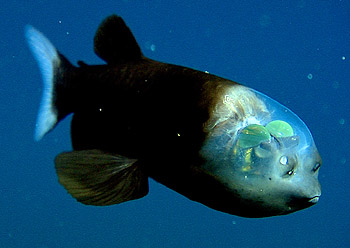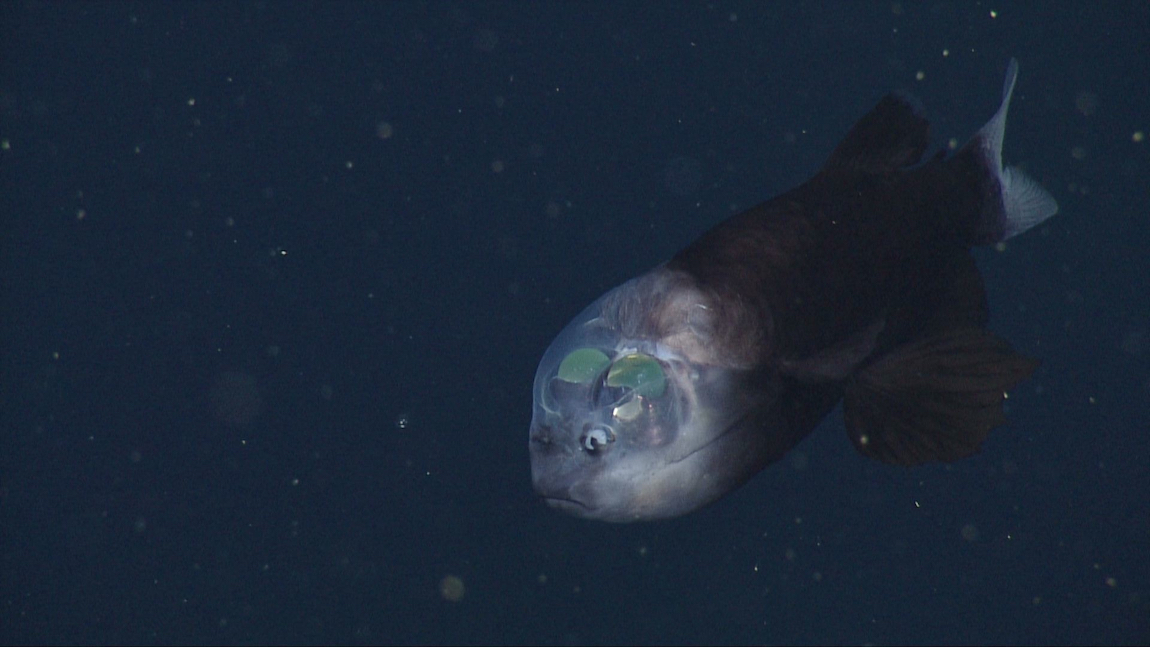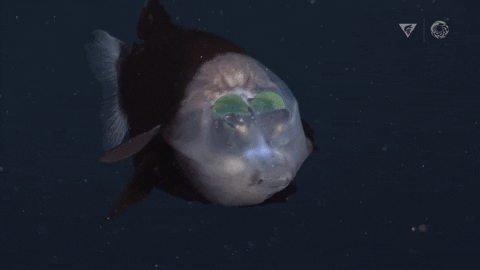
Barreleyes, also known as spook fish (a name also applied to several species of chimaera), are small deep-sea argentiniform fish comprising the family Opisthoproctidae found in tropical-to-temperate waters of the Atlantic, Pacific, and Indian Oceans.
These fish are named because of their barrel-shaped, tubular eyes, which are generally directed upwards to detect the silhouettes of available prey; however, the fish are capable of directing their eyes forward

All species have large, telescoping eyes, which dominate and protrude from the head, but are enclosed within a large transparent dome of soft tissue.
These eyes generally gaze upwards, but can also be directed forwards.
The opisthoproctid eye has a large lens and a retina with an exceptionally high complement of rod cells and a high density of rhodopsin (the "visual purple" pigment); no cone cells are present. To better serve their vision, barreleyes have large, dome-shaped, transparent heads; this presumably allows the eyes to collect even more incident light and likely protects the sensitive eyes from the nematocysts (stinging cells) of the siphonophores, from which the barreleye is believed to steal food.
t may also serve as an accessory lens (modulated by intrinsic or peripheral muscles), or refract light with an index very close to seawater. Dolichopteryx longipes is the only vertebrate known to use a mirror (as well as a lens) in its eyes for focusing images.
